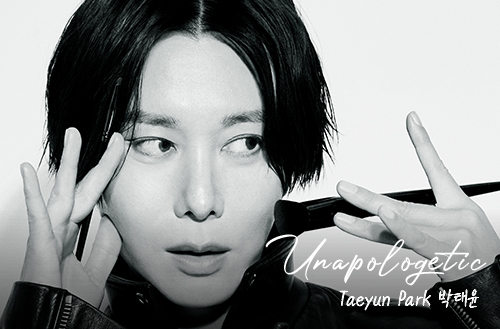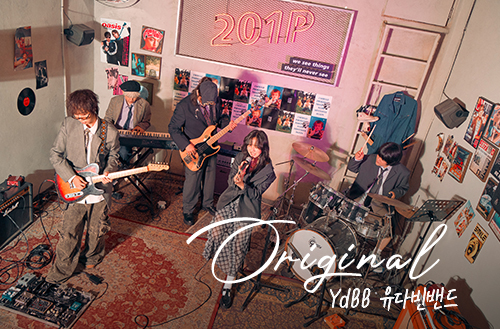
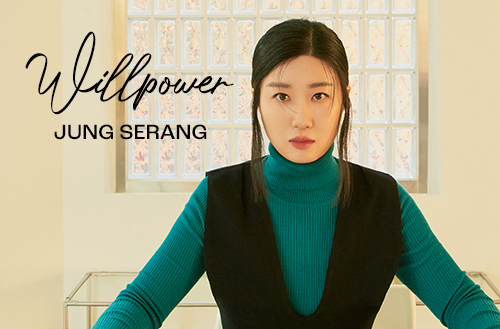
-
-
- 메일 공유
-
https://stories.amorepacific.com/en/amorepacific-encountering-serang-jungs-new-beauty
Encountering Serang Jung’s New Beauty
Born of Leisure, Relaxation, and Serendipity

The ‘New Beauty Icon’ series introduce individuals who inspire the world through their unique beauty. This edition features novelist Serang Jung. She strives to write stories that “focus on what happens between love and love” and “begin in the everyday before sliding far into unfamiliar territories.” From “School Nurse Ahn Eunyoung” to “From Sisun,” “The Only Hana on Earth,” “Fifty People,” and “The Seol Jaeun Series,” the author’s world unfolds stories woven with humanity’s diverse colors and light. Readers receive a gift of colored pencils containing all the world’s hues through her writing. Observing lives that shine despite their differences in her stories, they find the courage to choose their favorite color and draw their picture. So, what form does new beauty take for novelist Serang Jung, who crafts stories true to herself?

Your stories seem to align perfectly with the philosophy of ‘authentic beauty.’ It’s terrific to meet you as our New Beauty Icon.
The words “new beauty” and “icon” carry such weight—neither can be taken lightly. I initially felt slightly pressured, but then I realized how wonderfully diverse beauty can be. That’s when I thought, “Let’s embrace this challenge!” (laughs) I see the world as a mosaic, so when I write, I decide which part of that mosaic I want to portray. Like this photoshoot today, where professionals work together, we can observe various pieces of that mosaic. This was a fantastic opportunity to work with people I rarely meet—hair stylists, makeup artists, stylists, photographers, and editors. I was also happy to have conversations about beauty. Thank you for inviting me.
New beauty, icon—these are weighty words that give us much to think about. What does new beauty, or authentic beauty, mean to you?
It’s about having a strong inner core that maintains one’s will and direction even in external storms. It means recovering without being too harsh on yourself when you waver. I hadn’t realized it until a close friend told me, “Serang, you often use the word ‘shimji’ (inner core) when talking about people you like,” adding how happy it made them when I used that word to describe them too. For instance, I would say things like, “Even when there’s a storm outside, you maintain your inner core,” or “You have your inner core and don’t get swept up mindlessly in changes.” I had forgotten about this habit, but hearing my friend’s observation made me realize how much I love this word and the people I can describe with it. People who seek or possess this inner core are those who truly understand their unique beauty.
In your works, we often encounter characters who aren’t confined by conventional standards and who discover and accept themselves. These are the ‘people with inner core’ you mentioned. It seems you want to discuss the importance of authentic beauty and being true to oneself.
While it wasn’t necessarily intentional, maintaining one’s inner core is particularly important in modern society. These feelings have naturally seeped into my characters and stories. In pre-modern times, people might have known only a few hundred others throughout their lifetime, but today’s society is flooded with information created by people worldwide. In this era, maintaining our center and filtering our thoughts is more crucial than ever. Otherwise, we risk getting swept away.
From Ahn Eunyoung and Shim Sisun to Hana, the fifty protagonists of Fifty People, and Seol Jaeun—your characters each possess their unique beauty. Your work conveys a deep affection for humanity. You seem to genuinely like people.
That’s right. I do like people. I’m pretty extroverted—an ‘E,’ as they say. (laughs) My calendar is always filled with meetups with friends. I think this tendency shows in my writing, too. I have many longtime friends, and when I meet people, rather than weighing their pros and cons, I observe what they value more and what matters less to them. I try to see people holistically, in three dimensions. When you look at people this way, you realize there’s no such thing as a horrible person.
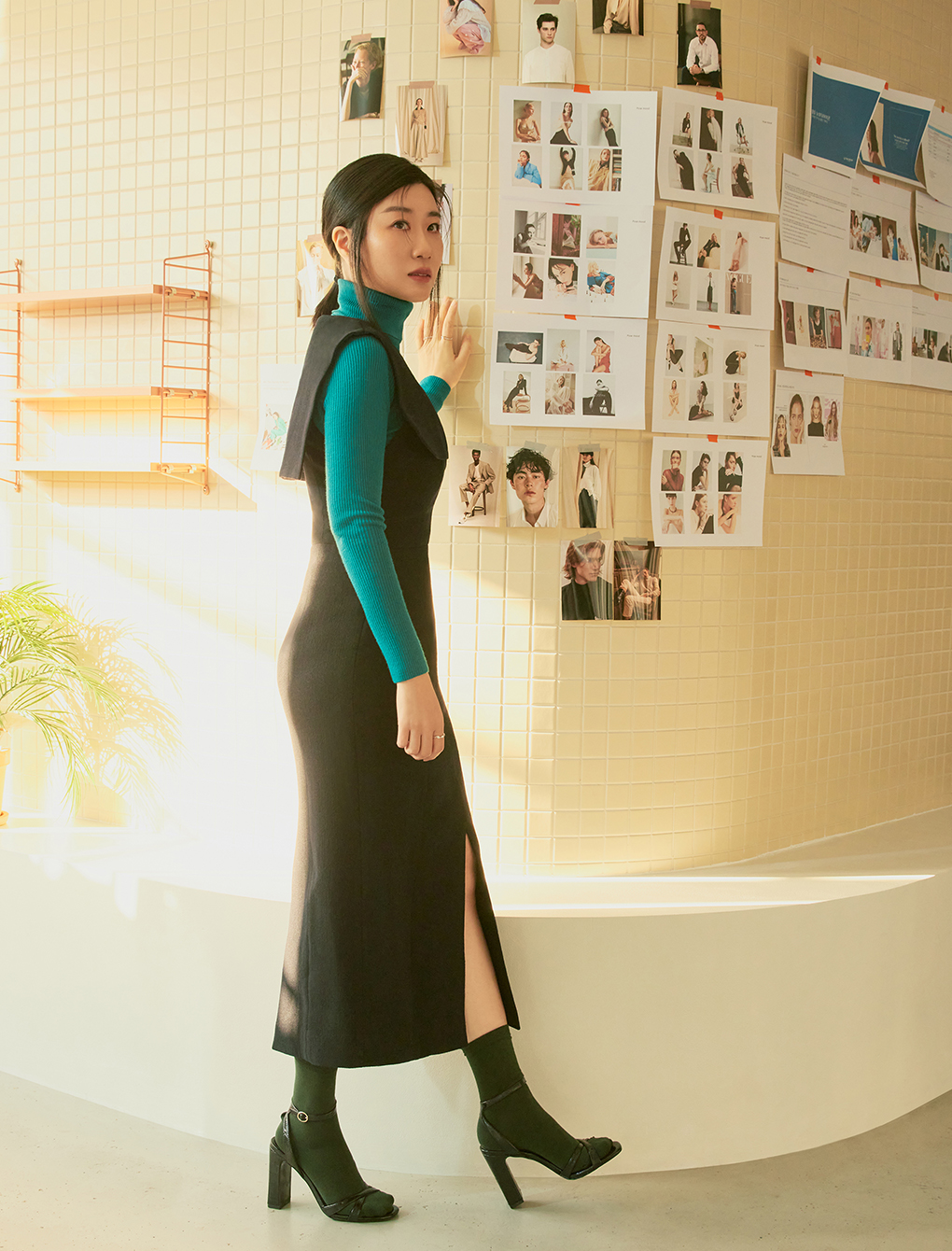
Do you discover beauty through people? I’m curious about your methods for finding beauty.
I discover it through everything I encounter over time, including people. What’s crucial in discovering beauty is ‘being in a state where I can appreciate beauty as beauty.’ You can only see beauty when you have command over your rhythm. When you’re too busy, rushed, or exhausted, it’s hard to capture beauty even when it’s right in front of you. Some beauty can only be captured when you stop and look closely. That’s why I deliberately stroll. I keep my mind uncluttered and relaxed. There was a brief period during my writing career when I lost my center. I was doing too much work, wanting to please everyone who reached out. People tell me it must have been a great year with many positive things happening, but I don’t remember much. Since then, I’ve maintained a slower, more relaxed pace. Ironically, this helps me not miss beautiful moments.
You have a hobby that started during your New York trip, right? Finding beautiful objects that people leave behind on the streets. This hobby requires strolling, too. You still post photos of these found objects with hashtags on social media. What do you find beautiful about it?
Instagram에서 이 게시물 보기
Instagram에서 이 게시물 보기
It started when I found an abandoned rabbit doll during a picnic in Central Park. That was in 2012; I still see two or three items each month. I gradually share these collections on social media. More than the objects themselves, I think about the moments when people become careless. While losing something is unfortunate, it represents a break in consistency when daily life takes a slightly different direction. I wonder what happened—what made them forget this? Did they see something more fascinating? Did something else capture their attention? I love contemplating the beauty of such moments. They probably made a mistake in a moment of relaxation, and I, too, find these objects in my relaxed moments. It’s a beauty discovered when leisure, relaxation, and serendipity overlap. Come to think of it, in Korean, all these words start with the character ‘ieung (ㅇ)’: leisure, relaxation, coincidence, beauty.
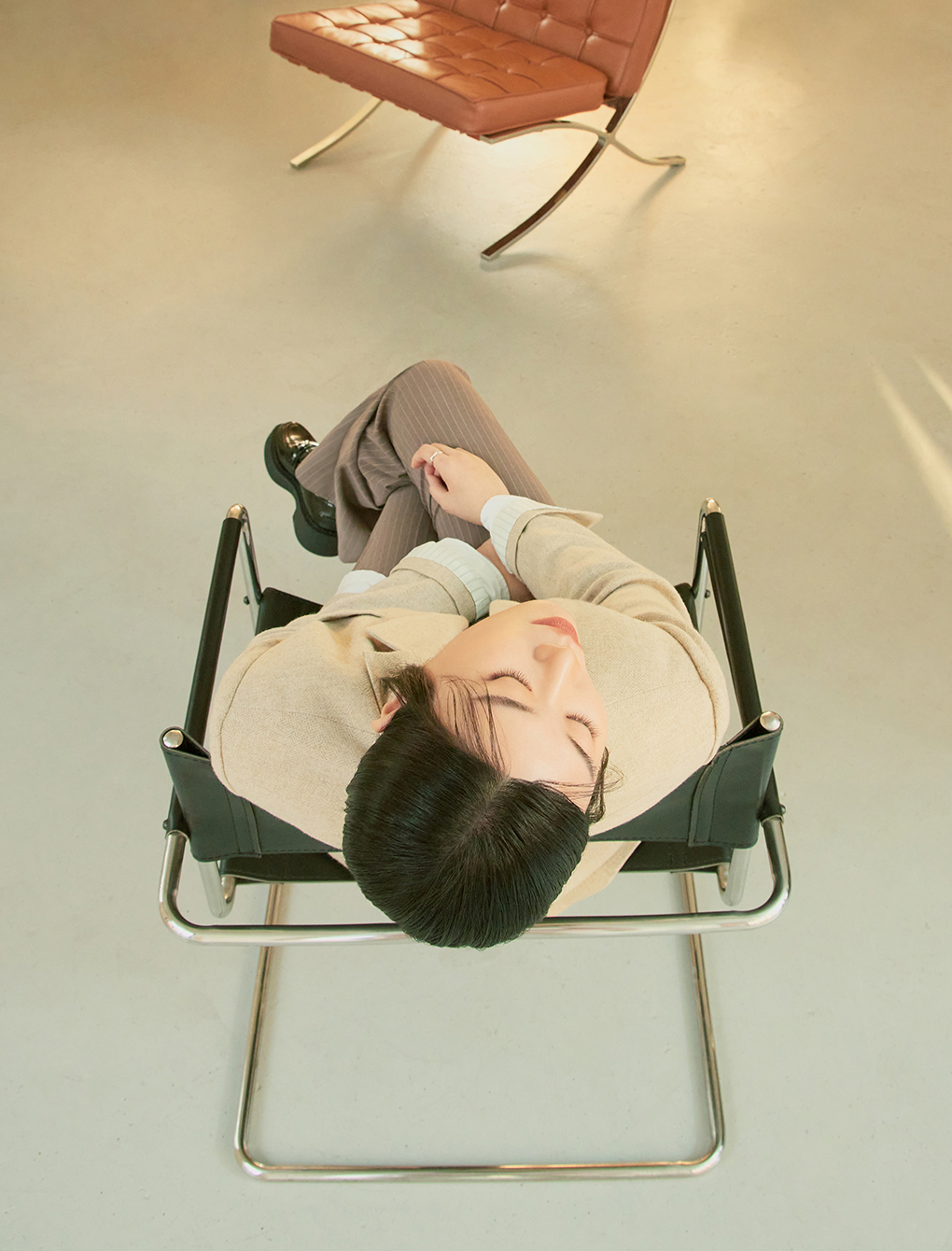
Indeed, these Korean words starting with ‘ieung (o)’ are as soft and beautiful as the character itself. Bird watching is another longtime hobby of yours, isn’t it? Do you still do it?
Yes, I recently saw an incredible goshawk. It was huge with a white belly. I went to a hill where small birds usually gather in winter, but there wasn’t one in sight. I wondered what was happening and where all the birds had gone when this massive hawk passed by. The small birds had hidden when it took flight. It was a white hawk with an impressive wingspan. I discovered the overwhelming beauty of birds of prey. I’ve heard that a hawk lives near Bugak Skyway, and I’d like to know if this was that one or perhaps a visitor from Siberia. I memorized its markings quickly and looked it up when I got home—I’m sure it was a goshawk. Though I could be wrong, judging by its size and white belly markings, I think that’s what it was.
So you’ve seen a hawk like the one in the Seol Jaeun series? Speaking of which, the series’ second volume has finally been published. It’s a historical mystery investigation set in Unified Silla 1,300 years ago. Is there a particular reason you chose the Unified Silla period?
I was drawn to that era because it encompassed division, conflict, and unification all at once. I was curious how such different directions could exist in a single period. When you think about it, many of the initiatives from that time were remarkably modern. It was an era after long-standing enemies had disappeared, so they must have wondered where to go next. They must have been very future-oriented. These concerns weren’t so different from our own today. Also, I love ancient history. Time acts as a buffer for sadness. While death in modern history is infinitely sad and painful, a death from a very distant era brings more joy than sorrow—we rejoice when we discover an ancient tomb, don’t we? The same goes for filth. Just as ancient food waste becomes valuable historical material. I chose the setting from 1,300 years ago partly because I enjoyed this distance where both filth and sorrow have dissipated.
Will future generations value our trash? I’m worried it might retain its filthiness. I understand you think a lot about environmental issues. You brought your tumbler with water today, and I remember you mentioning at the end of your travel essay that you would try to fly less. Are you still avoiding long flights?
Yes, I don’t fly unless it’s for work. As a result, I’ve discovered the joys of domestic travel. Overseas trips require at least a week and disrupt my writing rhythm, but domestic travel only needs two or three days, so it refreshes me without disturbing my routine. For the past few years, whenever I had scheduled library lectures, I would explore the local area afterward, which I enjoyed. I also gather lots of material and ideas for my novels. In the Star Wars animation project I’m working on, there’s a scene featuring ‘dolgarakdol,’ inspired by the rounded stones of Geoje’s Mongdol Beach. My recent discovery of beauty is Cheonsu Bay in Chungcheong Province. I encountered incredible beauty while driving along the coastal road. I was amazed that such exotic and magnificent beauty exists here. I wonder if many people are missing out on Korea’s beauty because they’re so accustomed to traveling by plane.
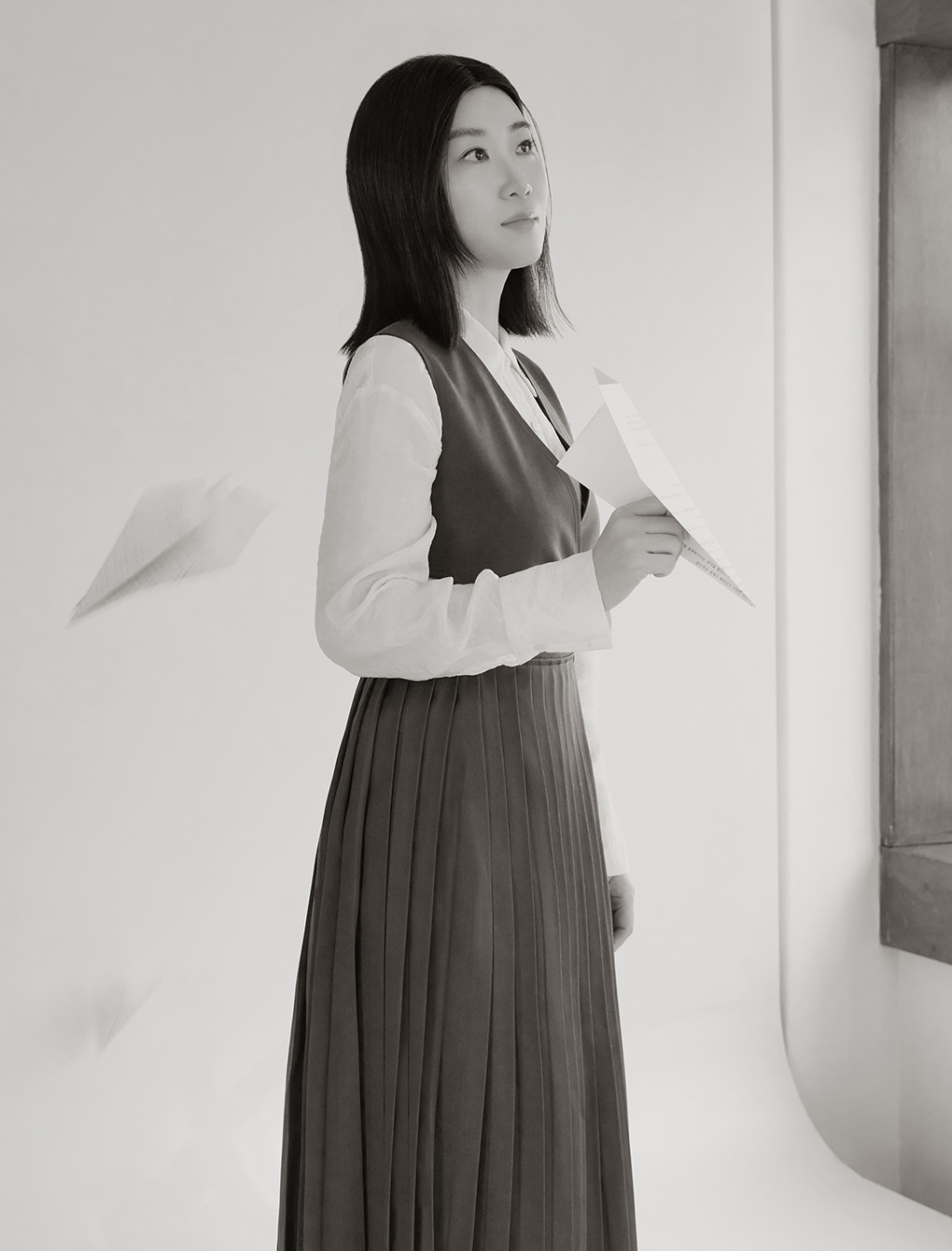
You’re constantly creating stories across different media, like the Star Wars animation. Is imagination the key to creating new stories?
I think of myself as a pipe through which stories flow. When you keep letting stories flow, the pipe works well, and they pour out abundantly. When creating stories, notes help more than imagination. I take notes very diligently. I jot down everything—interesting jokes, scenery I’ve seen, anything. For instance, I’ll note how a single beam of light fell through heavy clouds or how the sunset beautifully colored the sky. I take notes on my phone and notebook and frequently review and reread them. Sometimes, a note from yesterday suddenly connects with one from years ago like magnets—that’s when a story is born. Rereading the notes triggers new ideas and new combinations. When you keep notes of beautiful moments, meaningful stories can emerge.
Many people love the stories born this way. You have many domestic and international readers eagerly awaiting your subsequent work. What do you think makes writing distinctly Serang Jung?
Writing that’s distinctly mine... When I write, I’m trying to transfer a particular atmosphere. I often think about the air surrounding people, events, or eras. Rather than making sharp, direct contact, I try to give space for thought, like creating room to breathe. I’m always conscious of this atmosphere when writing stories, and I try to write as if I’m walking beside the characters rather than entering them. That’s how most of my favorite novels were written. Though I’ve never been there, it feels like the atmosphere comes to me—perhaps because we end up resembling the novels we love. I want to write stories that begin in the every day and slide far into unfamiliar places. I hope to mix intimacy and adventure in various proportions. I want my writing to create something beyond just 1+1=2.
Is there someone you think embodies your idea of authentic beauty?
Musician Yuna Kim! Sometimes, she posts photos of herself resting in the hospital on social media. Seeing those, I realize that even someone who fills the stage with such intensity needs time to relax and recharge. I find comfort in how freely she talks about her moments of weakness, not just the healthy, perfect moments. It’s admirable how she shares these vulnerable moments. I wrote in my essay that I was also sick when I was young. It took courage to talk about that. There’s always inner resistance to showing our weaknesses. While many people think they need to show only strength to be perfect, Yuna Kim naturally shows her vulnerable, struggling moments, and that’s why I’ve come to admire her. Being able to show weakness is remarkable and is another way of finding one’s authentic beauty.
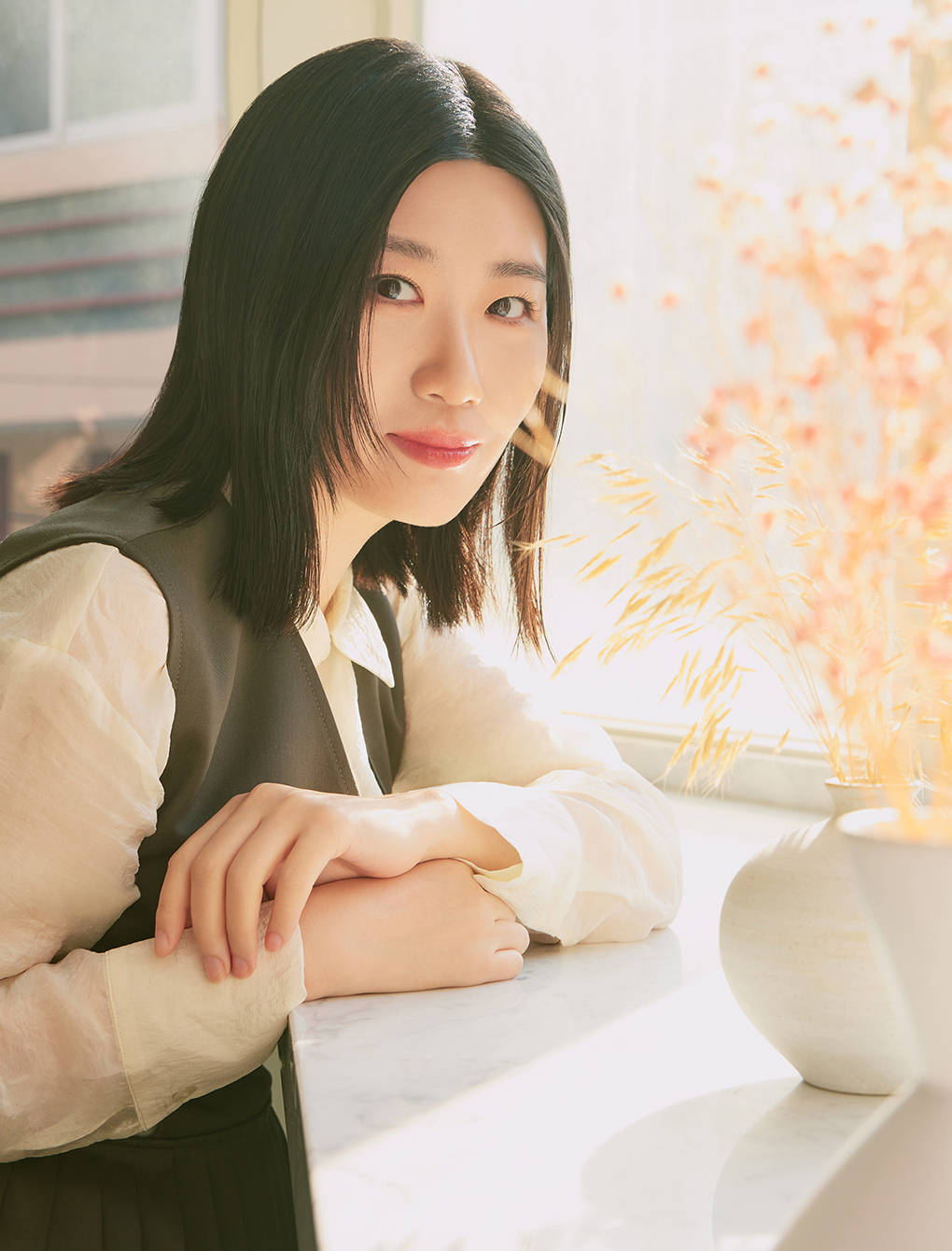
Do you have any words for those trying to discover their authentic beauty?
I hope you’ll treat yourself the way you’d discover the good qualities in your closest friend. Be bold in showing your vulnerabilities, too.
What kind of beauty would you like to develop and show in the future?
In daily life, I’d like to become someone who can embody tradition and culture well—to put it in an image, someone who wears hanbok gracefully. I admire people who cherish and incorporate our unique culture into daily life, and I envy those who can skillfully mix and match everyday clothes with hanbok. I’m considering wearing a hanbok to a reading session—what do you think? (laughs)
That would be beautiful. We support your new endeavor! For our final question, do you have any plans to maintain your authentic beauty in the future?
I feel most like myself when I’m doing things I love. I enjoy writing and snorkeling along the coast. When connected to the sea, I feel most in touch with who I am. I plan to create many such authentic moments this year, too. Besides writing, I spend most of my time having meaningful interactions with people I care about. Looking back on the past year, I remember the most vivid moments gathered around a table. I want to have more of these times. I’m also about to begin research and planning for volume 3 of “Seol Jaeun.” Since people are waiting, I’ll carefully filter everything I’ve read. I hope everyone has a year that shines with their authentic beauty.
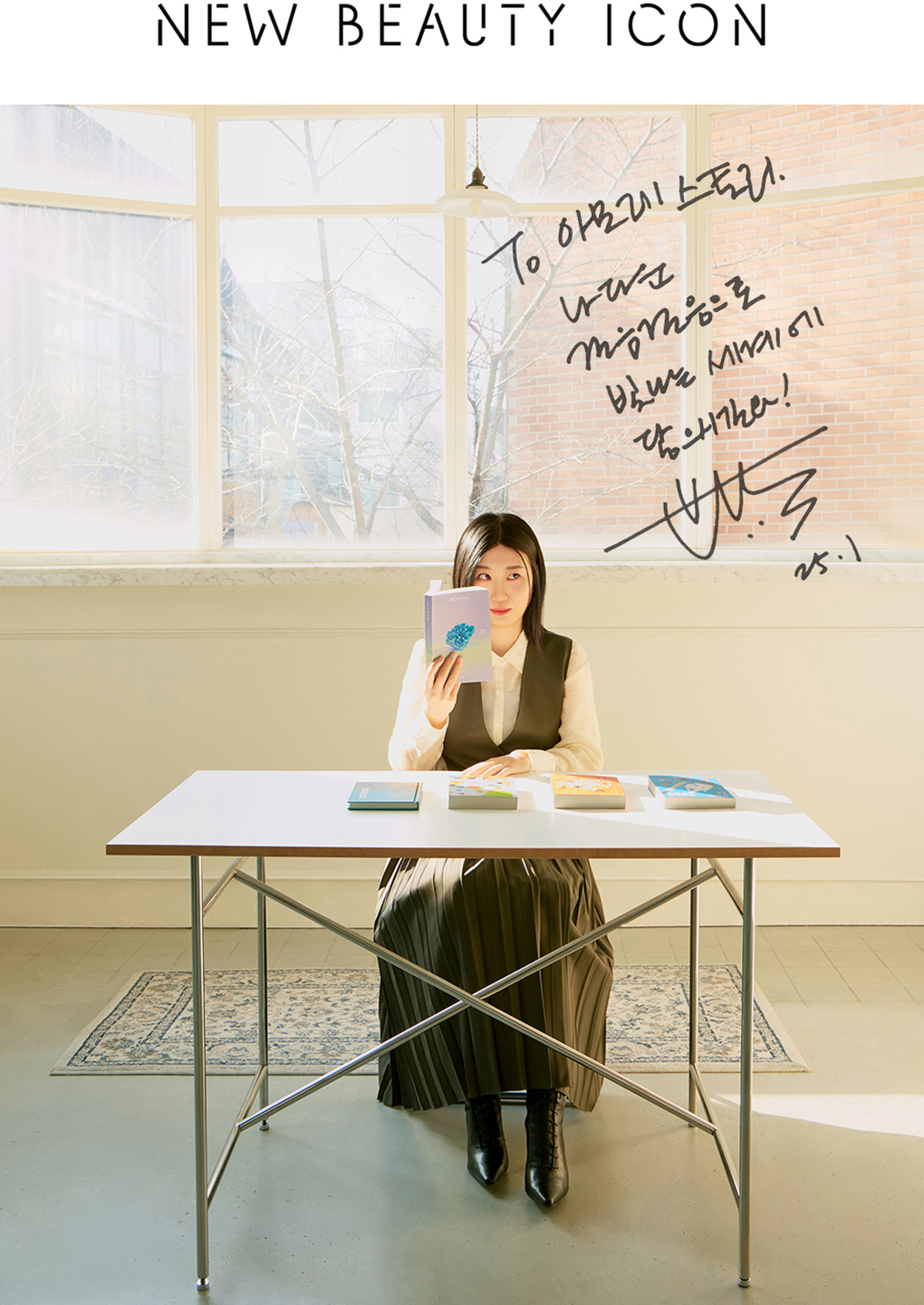
In the ‘New Beauty Icon’ series, we meet individuals who inspire the world and explore ‘their own beauty’ they’ve discovered in their lives.
Content Production KAYA Media
Planning Amorepacific Communications Team
-
Like
0 -
Recommend
0 -
Thumbs up
0 -
Supporting
0 -
Want follow-up article
0

